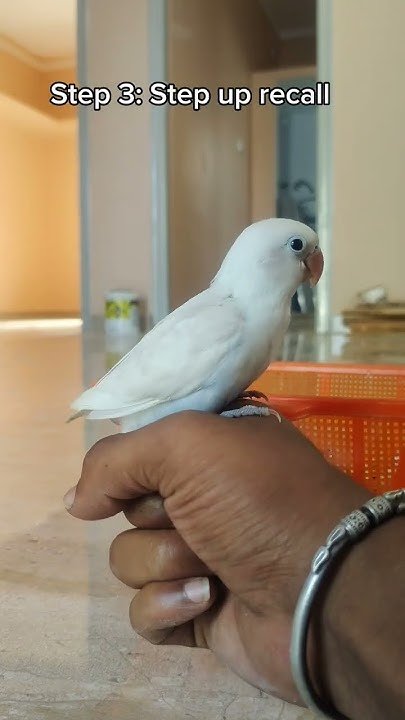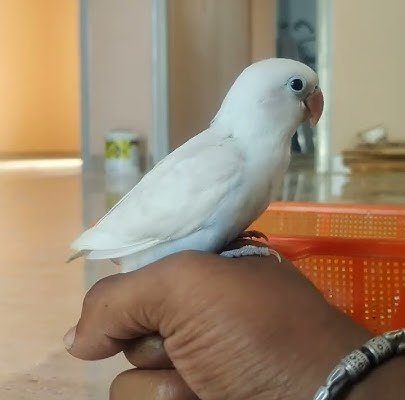
Picture this: you’re sitting with a cup of coffee, talking to someone new. You wouldn’t dive right into personal stories; you’d start with light conversation and gradually build trust. That’s the essence of taming and bonding with a lovebird. You’ll need patience, consistency, and a sprinkle of love. Let’s explore how to create a strong friendship with your lovebird in a way that feels natural and enjoyable for both of you.
Understanding Lovebird Behavior
When you’re thinking about bonding with a lovebird, it’s essential to first understand their behavior. Lovebirds are social creatures, often found in pairs in the wild. They thrive on interaction, which means they’ll enjoy spending time with you. However, they can also be shy, especially in a new environment. If you pay close attention, you can read their body language, which is key to helping them open up.
You might notice behaviors like fluffing their feathers, chirping, or even hiding when they’re feeling nervous. These signals can give you insight into how they’re feeling. For instance, if your lovebird fluffs up and makes soft noises, that’s usually a sign of contentment. On the flip side, if they’re hiding or avoiding eye contact, it’s a clear signal that they need more time to adjust.
Creating a calm environment for your lovebird will help them feel safe. Try to minimize loud noises or sudden movements around them. Over time, they’ll grow used to you and your space, making it easier to bond.
Building Trust Through Routine
One of the most effective ways to tame and bond with a lovebird is through routine. Birds find comfort in predictability, so establishing a daily routine can help ease their nerves. Start by setting regular times for feeding, cleaning, and playtime. Consistency allows your lovebird to learn what to expect from you.
For example, try to feed your lovebird at the same time each day. When they see you coming with food at the usual time, they’ll begin to associate you with positive experiences. This builds trust over time. You might even offer treats like small pieces of fruit or vegetables during these sessions to make these moments special. Just remember, moderation is key!
Also, consider having short, calm interactions throughout the day. You could sit near their cage while reading or talking softly. This helps them get used to your presence without feeling pressured to interact immediately.
Hand-Taming Your Lovebird
Now that you’ve built a trusting environment, it’s time to move on to hand-taming your lovebird. This process can take time, and that’s perfectly okay. Start by offering your hand while speaking softly to them. Don’t rush this step—let them come to you on their terms.
A great method is to place your hand inside their cage, palm up, and wait patiently. If your lovebird shows interest and hops onto your hand, that’s a good sign! If they seem hesitant, don’t force it. Try again later. Consistent, gentle encouragement is key here.
Once your lovebird comfortably perches on your hand, you can start incorporating short snippets of playtime outside the cage. Holding them close to your chest can mimic the warmth and safety they feel in their natural environment. Over time, this could develop into a lovely routine where they come to you for cuddles and play.
Using Positive Reinforcement
Positive reinforcement is a fantastic way to encourage good behavior and strengthen your bond with your lovebird. Birds are intelligent creatures and respond well to rewards. Whenever your lovebird does something you like—like stepping onto your hand or chirping happily—reward them with a treat or praise.
This method reinforces the behavior you want. For instance, if your lovebird climbs onto your finger, give them a small treat immediately afterward. They’ll begin to associate these actions with positivity. Remember, though, not to overwhelm them with treats; moderation is key!
Additionally, try to keep your training sessions short and fun. Lovebirds have short attention spans, so aim for about 10-15 minutes of interaction a few times a day. This keeps them engaged without becoming bored or stressed.
Creating a Comfortable Environment
A comfortable environment is crucial for your lovebird’s well-being. Make sure their cage is spacious enough for them to move around comfortably. Add perches of different sizes and textures so they can exercise their little feet. A variety of toys will also stimulate their minds and help prevent boredom.
You might also want to consider placing their cage in a location where they can see you and the family. Lovebirds are social birds and enjoy being part of the action. However, make sure it’s a quiet corner away from excessive noise, drafts, or direct sunlight. A cozy blanket or a cover for the cage can help create a safe haven when they need some downtime.
Lastly, spending quality time outside the cage can be beneficial too. Set aside time each day for your lovebird to explore safely in a bird-proof room or area. This not only enriches their environment but also builds trust and familiarity between you two.
Recognizing Signs of Stress
Just like humans, lovebirds can experience stress, and it’s important to recognize the signs. Stress can manifest in various ways, such as plucking feathers, excessive vocalization, or aggression. If you notice any of these behaviors, take a step back and reassess their environment and interactions with you.
Changes in your bird’s behavior can signal that they need more time to adjust or that something in their environment is bothering them. For instance, if they’re scared of loud noises, try to create a quieter space or introduce calming background music.
It’s also essential to regularly monitor their health. A stressed bird may not eat or drink properly, which can lead to serious health issues. If you’re ever concerned about your lovebird’s well-being, don’t hesitate to consult with an avian vet.
Enjoying the Journey Together
Bonding with a lovebird is truly a journey—one that requires patience, understanding, and lots of love. Celebrate the small victories along the way! Whether it’s a head tilt in your direction, a gentle chirp, or a perched cuddle on your finger, each moment brings you closer to forming a solid friendship.
Remember, every lovebird is unique, so what works for one may not work for another. Embrace the quirks of your feathered companion and enjoy the discovery process. Over time, with the right approach and plenty of tender care, you’ll foster a bond that can last a lifetime.
Building a relationship with a lovebird is all about creating a safe and loving environment. With patience and understanding, you’ll find that your lovebird will become more than just a pet—they’ll be a cherished part of your family.

